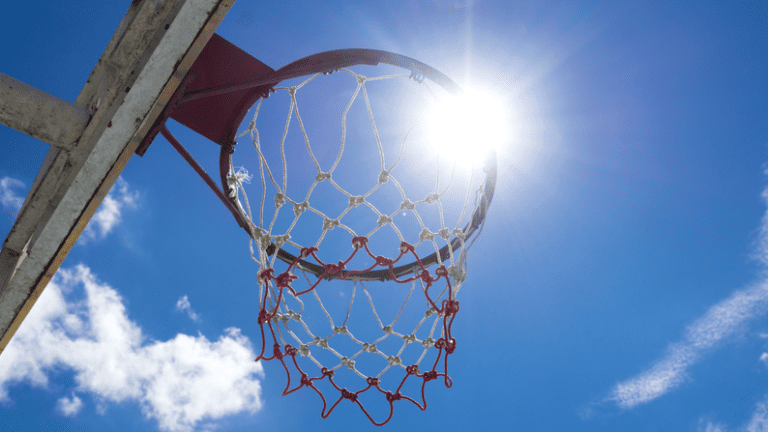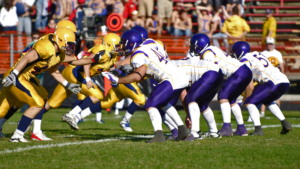Let’s face it–summer break is around the corner, and for aspiring hoopers around the world, that means joining club or AAU teams in hopes of playing in front of the collegiate coach that may send them a letter of interest.
Summer, summer, summertime! Summer ball was my favorite time of year. I was able to travel to new cities, hang with my friends every single day and play basketball. I truly believed I had the best life. I was so grateful that my days consisted entirely of basketball. I wasn’t worried about going to class or doing homework or being somewhere for my younger brother. I knew I wanted do this for the rest of my life if I was able to.
As grateful as I am for playing on such amazing club teams (because if I had not, I may not have received the opportunity to attend and play at Oregon State University), I also believe that more and more young players need to be spending more time on their skill development and less on playing on three or four club teams throughout the spring and summer break.
Most high school athletes are playing over a hundred games during the summer, which gives you a lot of in game experience but, when you break it down, an average player may have the ball in their hands for about 10% of an entire game (four minutes of a 40-minute game). Out of at least 80 possessions, you will take about five shots, play 15 minutes, and will only take about two free throws. And of those 100 games, 10 of them could be against top players, meaning they will have coaches watching them and you could possibly get noticed. However, this also means you will only have about five extraordinary games this summer, and the likelihood of one of those games being against a top player is about 1%.
So, how are you supposed to get better with odds like those?
There are four phases of the basketball timeline, beginning spring break through the end of July. Those phases are crucial because throughout the four phases, you will want to play in at least two sanctioned tournaments (where colleges coaches will be).
With that being said, if playing your sport at the next level is important to you, then you should take into account my 80/20 rule: 80% of your time should be directly focused on your skill and physical development. That means improving your strengths, and strengthening your weaknesses. You should be working on your midrange, scoring off the dribble, doing bodyweight exercises, working on your handle, and doing everything at game speed. Creating and charting your workouts and results is the best way to hold yourself accountable. If you spend 80% on improving your game, then you should spend the other 20% on game exposure, experience and competition.
I have trained nearly 100 student-athletes over the past four years, and each one has told me that one of their limitations is confidence. I’ve heard coaches instruct their players not to shoot three pointers because that wasn’t their role or yell “pass the ball” every time their player attempted to dribble up the floor. I’ve heard a coach tell the team to shoot after 10 passes but only allows one player to take a shot before the 10th and when another player does, they are yelled at. Unfortunately, there are even more cases where a coach has discouraged a player from playing the game. This is why 80% of your time must be spent on working on as much as your game as possible. Do not give a coach a reason not to have you on the floor shooting, dribbling or attacking the basket.
The summer is a critical time for players and many aren’t using that time wisely. Players are waiting until the month before season to begin to start working on their game. That’s mind blowing! How can you believe that a few weeks before season is sufficient enough time to prepare you for your high school team? I want to break this concept down even more. So, I give you 100 days this summer. In those 100 days, 80 of them should be spent practicing and really training yourself or being trained. Those other 20 days should be used to test all of the work you put into elevating your game to another level.
|
DAY 1 |
DAY 2 |
DAY 3 |
DAY 4 |
DAY 5 |
DAY 6 |
DAY 7 |
|
DAY 8 |
DAY 9 |
DAY 10 |
DAY 11 |
DAY 12 |
DAY 13 |
DAY 14 |
|
DAY 15 |
DAY 16 |
DAY 17 |
DAY 18 |
DAY 19 |
DAY 20 |
DAY 21 |
|
DAY 22 |
DAY 23 |
DAY 24 |
DAY 25 |
DAY 26 |
DAY 27 |
DAY 28 |
|
DAY 29 |
DAY 30 |
DAY 31 |
DAY 32 |
DAY 33 |
DAY 34 |
DAY 35 |
|
DAY 36 |
DAY 37 |
DAY 38 |
DAY 39 |
DAY 40 |
DAY 41 |
DAY 42 |
|
DAY 43 |
DAY 44 |
DAY 45 |
DAY 46 |
DAY 47 |
DAY 48 |
DAY 49 |
|
DAY 50 |
DAY 51 |
DAY 52 |
DAY 53 |
DAY 54 |
DAY 55 |
DAY 56 |
|
DAY 57 |
DAY 58 |
DAY 59 |
DAY 60 |
DAY 61 |
DAY 62 |
DAY 63 |
|
DAY 64 |
DAY 65 |
DAY 66 |
DAY 67 |
DAY 68 |
DAY 69 |
DAY 70 |
|
DAY 71 |
DAY 72 |
DAY 73 |
DAY 74 |
DAY 75 |
DAY 76 |
DAY 77 |
|
DAY 78 |
DAY 79 |
DAY 80 |
DAY 81 |
DAY 82 |
DAY 83 |
DAY 84 |
|
DAY 85 |
DAY 86 |
DAY 87 |
DAY 88 |
DAY 89 |
DAY 90 |
DAY 91 |
|
DAY 92 |
DAY 93 |
DAY 94 |
DAY 95 |
DAY 96 |
DAY 97 |
DAY 98 |
|
DAY 99 |
DAY 100 |
|
||||
Here’s your 100 days. Now, make the most of it.
How useful was this post?
Click on a star to rate it!
Average rating 0 / 5. Vote count: 0
No votes so far! Be the first to rate this post.



